This article was written by Estelle Moore in 1982. Estelle was the mother of Pizenswitchtimes.com Editor Leah Moore Wilkinson.
June 6th, 1982 was the 44th anniversary of when Al and Mary Vale first opened their Wabuska Bar. And Mary, who appears much younger than her 75 years, is still running the business, situated about 12 miles north of Yerington at a railroad crossing.
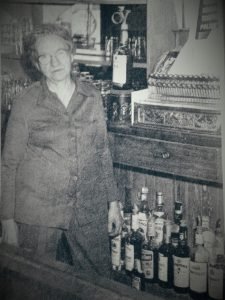
Her arthritis causes her to get around somewhat slower than she used to, but she waits on all her customers by herself with a cheery smile and a lively interest.
“Al ran the bar himself for 25 years but when he was doing work outside or he had to go to town and somebody happened to come in I’d wait on them…and I’ve been running it myself now for 19 years,” says Mary. (Her husband died in 1963).
The Veils were just a young couple when they acquired the building (then known as the “old Feeney Place”) in which the bar is located, from Carl Gelmstedt’s mother. They had just lost their place in Yerington, Al was making only $44 a month with the WPA, and Mary was working “for Dini’s, doing bar towels and aprons”. They and their children–Dolores, 8, and John, 3–needed a place to live and the opportunity offered to them by Mrs. Gelmstedt appeared to be the solutions to their problems.
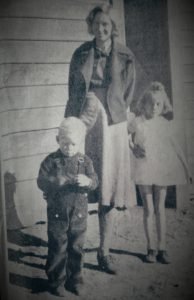
The old building goes back to 1881, according to Mary. It was used as a stopover for travelers in those horse and buggy days. The passengers on trains going from Reno to Silver Peak, Tonopah or Goldfield would enjoy meals in the big dining room.
The 18-room structure has housed a grocery store, huge dining room facility and a post office among other things. Rooms were often rented out to travelers, who at one time had to bring in their own bedrolls to sleep in upstairs rooms.
Mary says that her cousin used to work as a chambermaid there when she was only 9 years old. She would go over early in the mornings “to pack water upstairs and pack the pots down and see that the pitchers were full of water and the basins clean”.
The Veils purchase the building after Wabuska’s heyday. There were few businesses left in the community when they moved there in 1938. The nearby town of Thompson had closed down and only a group of Serbians from Utah came there seasonally to load slag for surfacing the main railroad line.
Several trains a day came through, stopping to take on water; and this was always a great event for the children.
The Veils took roomers and boarders in the early days. Mary tells of special train crews that went through during the war when “they’d call in from Hazen saying they’d be here for lunch or supper and I’d feed them” along with the telephone crew she had stop by on and off.
Of the telephone crew, she says, “Oh, I worked so hard for eight months that when they left I sat on the stool by the kitchen table and I couldn’t move, I was so all in. But I paid all the expenses. I bought all the bedding, all the sheets, paid for the electricity and the fuel and I ended up clearing enough to get my furniture and stuff.”
The Veil children had a happy childhood in Wabuska. In the beginning they attended a one-room schoolhouse with eight or ten other children. Their teacher was a Mr. Cast. After several years the school closed and they began taking a bus to Yerington.
Dolores remembers always having plenty to do in her youth. She designed doll clothes when she was only eight and at ten she learned how to sew from 4-H instructor Madge Schendel. She also played the piano, was a Rainbow girl, went to dances and sometimes went to the nearby hot springs as she grew older.
When John was small his main pasttime was riding his tricycle all around the house and later on he was quite the marble player.
Both youngsters “kind of chummed together” with the Pittman children who lived close by.
Dolores resides in Reno now, working at the Sparks Nugget as a waitress, while John and his family live in Yerington.
Life in Wabuska hasn’t been only hard work, Mary recalls. She used to do a great deal of crocheting, though she hasn’t had much time for this in recent years. Now she spends as much of her time as she can in her garden, raising carrots, onions and beets along with the flowers, and she does her own canning. Her son John and his family come from Yerington to help her with the heavier gardening work and other chores that need to be done.
Mary has always enjoyed living in Wabuska and tending her bar. She says “I like the spot…It has never been lonesome. There have always been people coming in to talk to, which we’ve never had before. It is enjoyable meeting different people.” She does confess to there being one disadvantage to living in Wabuska, however. “Some years it is a terrible mosquito hole.”
Whereas her customers in past years were often hoboes, cowhands, travelers, and even occasional rowdy outlaws, Mary serves drinks and snacks mainly to neighbors and friends and travelers driving through Wabuska now.
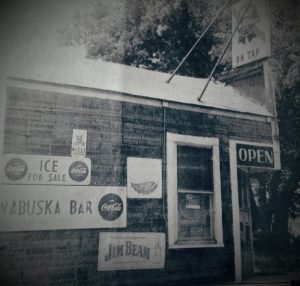
A big event is the twice-a-year flea market that takes place between her bar and the highway. The last one, put on by a couple of local women, had about 30 booths. Mary looks forward to the next one which will probably be held this fall.
For a number of years Mary has written poetry and much of it is about the things that are dearest to her heart. The one below, which she wrote in 1970, sums up her feelings about her bar:
“My Wabuska Bar is very old; which you can see.
It’s my home – it makes a living for me.
Have been 32 years in the old place,
Making new friends and still see an old face.
The floors are getting old and warn, roof is badly bent,
Just a load of hard work; but I am content.
So what is the use to worry or stew?
Now days in life is hard – What e’er you do.
Work hard to live – Pay income taxes and most to Uncle Sam.
I run the old place – It’s my job, and do it the best I can.”
Mary’s son and daughter understand her need to remain living and working in Wabuska. They have never tried to get her to move, but are always ready to lend her a hand when needed.
With her many friends, with children like these, and with plenty to do, Mary will never be bored or lonely.
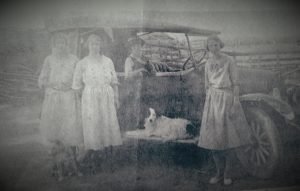
{June 2021 Update : Mary Irma (Nagel) Veil (1906-1993); Albert Carl Veil (1897-1963); John Albert Veil (1935-2020); Dolores Veil (Living)}
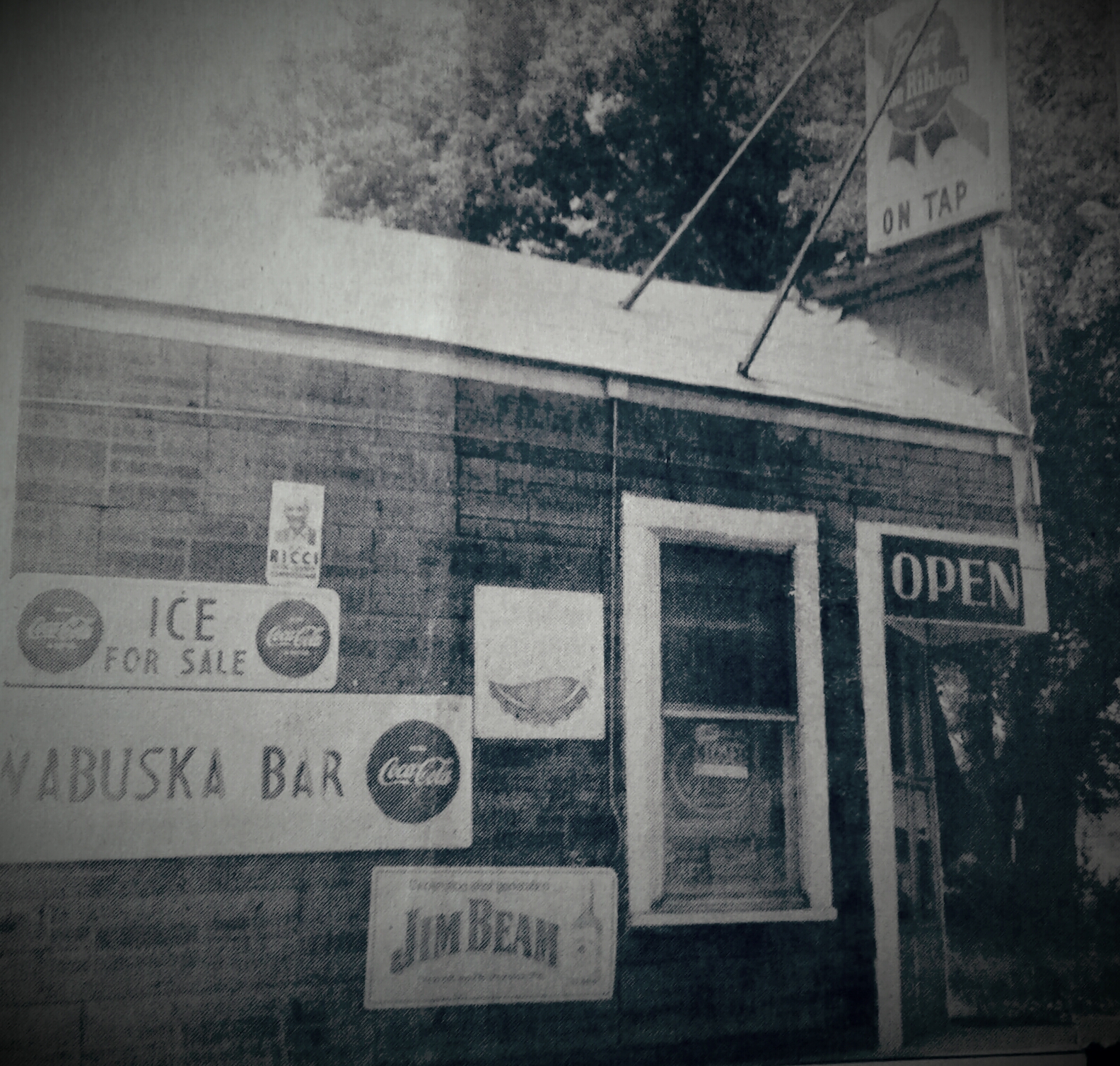




More Stories
Highways to History: 1949 Life in Mason & Smith Valleys NV
The Yerington Electric Company Telephone “Central” in July 1914: George Plummer & Evelyn Snyder
Nordyke Mill Intrigue Continues with New Research from Steve Plummer